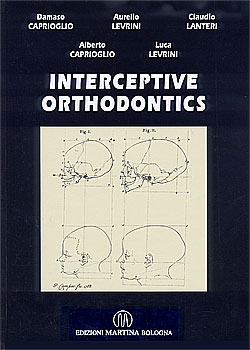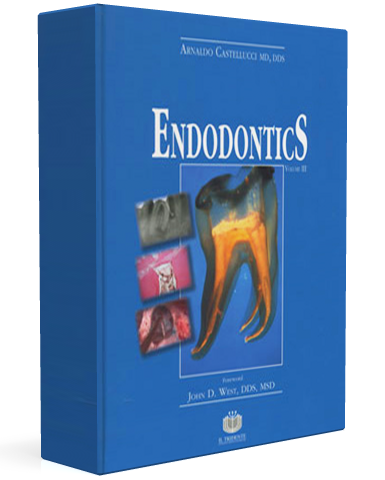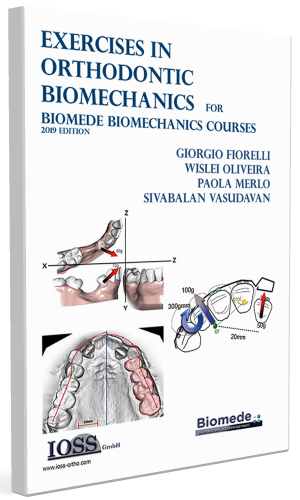Interceptive Orthodontics
Il prezzo originale era: 105,00€.99,00€Il prezzo attuale è: 99,00€.
Interceptive Orthodontics
Descrizione
Interceptive Orthodontics
CONTENTS
1 INTRODUCTION
References
2 CLINICAL APPLICATIONS OF THE PRINCIPLES OF CRANIOFACIAL GROWTH IN INTERCEPTIVE ORTHODONTICS
(with the collaboration of C. Capobianco)
1. FOREWORD
2. GENERAL CONCEPTS
2.1. The histogenesis of bone tissue
2.2. Desmocranium and chondrocranium
2.3. Skeletal units, skeletal pieces and the skeletal as a whole
2.4. Neurocranium and splancnocranium
2.5. Places and centres of growth
2.6. Remodeling
2.7. Sutures and synchondroses
2.8. Chronological, skeletal and dental age. maximum growth and growh curves
- DEVELOPMENT AND GROWTH IN THE FACE, BASE AND UPPER AND LOWER JAWS
3.1. Cranial vault
3.2. Cranial base
3.3. Maxilla
3.4. Mandible
- CRANIAL MORPHOGENESIS CONTROL FACTORS AND THEORETICAL INTERPRETATION
4.1. Genetic and environmental factors
4.2. Craniofacial growth theories
4.3. Clinical studies of craniofacial growth
- INTERCEPTIVE ORTHODONTICS, CRANIOFACIAL GROWTH AND THERAPEUTIC STRATEGIES
5.1. Skeletal anomalies in the sagittal plane
5.2. Skeletal anomalies in the vertical plane
5.3. Skeletal anomalies in the frontal plane
- OROFACIAL, MYOFUNCTIONAL THERAPY AND INTERCEPTIVE ORTHODONTICS
- CLINICAL CASES AND CONCLUSIONS
References
3 THE ROLE OF PEDIATRIC DENTISTRY IN INTERCEPTIVE ORTHODONTICS
(C. Caprioglio)
- FOREWORD
- PREVENTION3. CONSERVATIVE DENTISTRY
3.1. Amalgam
3.2. Composites
3.3. Composites for posterior teeth
3.4. Resin modified glass ionomer cements (RM GIC)
- SPACE MAINTENANCE AND MANAGEMENT: ORTHODONTIC PROBLEMS
4.1. Preformed crowns
4.2. Space maintainers
4.3. Long term preservation of second primary molars
4.4. Space management
- PREVENTION AND TREATMENT OF DENTAL TRAUMA
5.1. Trauma to primary dentition
5.2. Crown-root fractures
5.3. Root fractures
5.4. Extrusive luxation
5.5. Intrusive luxation
5.6. Lateral luxation
5.7. Avulsions
5.8. Trauma to mixed dentition
5.9. Hard tissue trauma
5.10. Supporting tissue trauma
- SPECIAL PATHOLOGY (AGENESIS AND SUPERNUMERARIES) AND PREVENTION OF PERIODONTAL DISEASE
References
4 BAD HABITS AND MOUTH BREATHING
- BAD HABITS
1.1. Sucking
1.1.1. Sucking of the thumb and fingers
1.1.2. Lip, cheek, tongue and foreign body sucking
1.2. Dietary errors
1.3. Self-injuring parafunctions
- BREATHING ANOMALIES
2.1. Clinical correlations between mouth breathing, morphology and craniofacial development
References
5 INTERCEPTIVE THERAPY IN CLASS I MALOCCLUSIONS
1.INTRODUCTION
2.CLASSIFICATION
- INCISOR SEGMENT CROWDING IN MIXED DENTITION
3.1. Primary crowding
3.1.1. Mild and transitory crowding (about 2 mm)
3.1.2. Mild non transitory crowding (about 4 min)
3.1.3. Severe crowding (>5 min)
3.1.3.1. The lip bumper
3.2. Secondary crowding
3.2.1. Lingual positioning of the mandibular incisors
3.2.2. Midline shift
- ANTERIOR AND BUCCALVERSION OF INCISORS
4.1. Introduction
4.2. Clinical aspects
- ANTERIOR CROSSBITE
5.1. Introduction
5.2. Clinical aspects
- POSTERIOR CROSSBITE
(with the collaboration of R. Olivi and M. Gandolfini)
6.1. Historical notes
6.2. The diagnosis of tranverse maxillary insufficiency
6.3. Therapy for upper transverse insufficiency: maxillary expansion
6.4. Slow palatal expansion
6.5. The quad-helix
6.6. Rapid maxillary expansion – general considerations
6.6.1. Indications
6.7. The rapid palatal expander
6.7.1. A description of the appliance
6.7.2. Characteristics of the technique
6.8. Marginal and deep periodontal effects of rapid palatal expansion
6.9. The effects of orthopedic palatal expansion on breathing, phonation and hearing
6.10. Relapse and retention
6.11. Side effects and complications
- CROWDING OF THE ARCHES’MIDLINE AREAS
7.1. Ectopic molar eruption
7.2. Serial extractions
7.2.1. Clinical aspects
- RESIDUAL ARCH SPACES FROM AGENESIS
(M. Gandolfini)
8.1.Introduction
8.2. Etiopathogenesis of dental agenesis
8.3. Dental agenesis diagnosis
8.4. Agenesis therapy classification
8.4.1. Ageneses of the anterior segment
8.4.2. Ageneses of the middle segment
8.4.3. Ageneses of the posterior segment
8.5. Space management
8.6. The treatment of oligodontia
8.6.1. Treatment of anterior hypodontia
8.6.2. Treatment of hypodontia of the middle segment
8.6.3. Treatment of hypodontia of posterior segment
8.6.4. Mixed hypodontia
- VERTICAL PROBLEMS
9.1. General
9.2. Vertical dimension changes
9.2.1. Vertical occlusion dimension (V.O.D.)
9.2.2. Vertical rest dimension (V.R.D.)
9.2.3. Free occlusal space or free way
9.2.4. Head posture
9.3. Occlusal forces
9.3.1. Reduced anterior face height
9.3.2. Increased anterior face height
9.3.3. Therapeutic approach
References
6 INTERCEPTIVE THERAPY IN CLASS II MALOCCLUSIONS
1. INTRODUCTION
2. GROWTH AND DEVELOPMENT: SOME SPECIFIC CONCEPTS
3. PROGNOSTIC INDICATIONS
3.1. Heredity
3.2. Age
3.3. Sex
3.4. The severity of the skeletal discrepancy
3.5. Skeletal type
3.6. Mandibular asymmetry
3.7. Craniomandibular problems
3.8. Dental relationships
3.9. Soft tissues
- INTERCEPTIVE ORTHODONTICS IN FUNCTIONAL CLASS 11 RELATIONSHIPS
4.1. Transverse problems
4.2. Sagittal problems
4.3.Verticalproblems
- INTERCEPTIVE ORTHODONTIC THERAPY IN SKELETAL CLASS II CASES
5.1. Transverse problems
5.2. Sagittal problems
5.3. Vertical problems
- INTERCEPTIVE ORTHODONTIC THERAPY IN CLASS II DIVISION 2 CASES
6.1. Class II, division 2 malocclusions with normal mandible growth
6.2. Class 11, division 2 malocclusions with mandibular deficiency
6.3. Class 11, division 2 with mandibular excess
References
7 INTERCEPTIVE THERAPY IN CLASS III MALOCCLUSIONS
(with the collaboration of M. Fedi)
1. INTRODUCTION
2. DIAGNOSTIC DETAILS AND PROGNOSTIC INDICATIONS
2.1. Heredity
2.2. Age
2.3. Sex
2.4. The severity of the skeletal discrepancy
2.5. Skeletal type
2.6. Mandibular asymmetries
2.7. Cranio?mandibular anomalies
2.8. Dental relationships
2.9. Soft tissues
- INTERCEPTIVE TREATMENT FOR CLASS III RELATIONSHIPS
3.1. Interceptive therapy of transverse class III anomalies
3.2. Interceptive therapy for sagittal class III problems
3.3. Interceptive therapy and class III vertical anomalies
3.4. Interceptive orthodontic therapy and class III problems
3.5. Myofunctional therapy in class III cases
References
8 TREATMENT AND PREVENTION OF CRANIOMANDIBULAR DISORDERS IN PEDIATRIC DENTISTRY
(M. Rosa and M. Cozzani)
- INTRODUCTION
2. THE EPIDEMIOLOGY OF C.M.D. IN THE PAEDIATRIC PATIENT
3. DENTAL OCCLUSION AND THE DEVELOPMENT AND GROWTH OF THE TMJ
4. DIAGNOSIS
4.1.Anamnesis
4.2. Clinical examination
4.3. Radiographical examination
4.4. Analysis of musculature and posture
4.5. Analysis of the environment
- THERAPY
5.1. C.M.D. in the absence of malocclusion
5.2. Treatment for C.M.D. in the presence of malocclusion (orthognatodontic and C.M.D. treatment)
5.3. Therapy for C.D.M. during or after orthodontic and/dental treatment
References
9 PREVENTION AND EARLY TREATMENT OF PERIODONTAL PROBLEMS IN INTERCEPTIVE ORTHODONTICS
(B. G. Maino and P Mura)
1. INTRODUCTION
2. EPIDEMIOLOGY OF PERIODONTAL DISEASE
3. THE ANATOMY OF THE PERIODONTIUM: FROM PRIMARY TO PERMANENT DENTITION
3.1. Tooth eruption
3.2. Periodontal types
3.3. Changes to attached gingiva during eruption
- ELIMINATING THE CAUSES
- PREVENTING IATROGENIC DAMAGE
6. INTERCEPTIVE TREATMENT OF WORSENING FACTORS
7. INTERCEPTIVE TREATMENT OF THE INCLUDED UPPER CUSPID
8. THE SUPERIOR LABIAL FRENUM
9. THE DEVELOPMENT OF MUCOGINGIVAL PROBLEMS
10. ATTACHED GINGIVA AND PERIODONTAL HEALTH
11. THE NON?ORTHODONTIC PEDIATRIC PATIENT
12. THE ORTHODONTIC PEDIATRIC PATIENT
12.1. Moving the tooth away from the problem
12.2. Not moving the tooth away from the problem
12.3. Moving the tooth towards the problem
- FREE MUCOGINGIVAL GRAFTS
References
10 LINGUAL ORTHODONTICS IN YOUNG PATIENTS FROM MIXED TO PERMANENT DENTITION
(Lorenzo Favero)
PATIENT’S SELECTION
WHEN BEGIN TREATING
COOPERATION OF THE PATIENT
ORAL HYGIENE MAINTENANCE
PHONETICS DISFUNCTIONS
AESTHETICAL REASONS
INDICATIONS FOR THERAPY
BIOMECHANICAL EVALUATIONS
PENDULUM “F” MECHANICS: CONTEMPORARY DISTALIZATION OF THE MOLARS AND FRONTAL ALIGNMENT
LABORATORY PROCEDURES
FINAL CONSIDERATIONS
References
INDEX




